Workshop and building projects maintain contractor’s cashflow
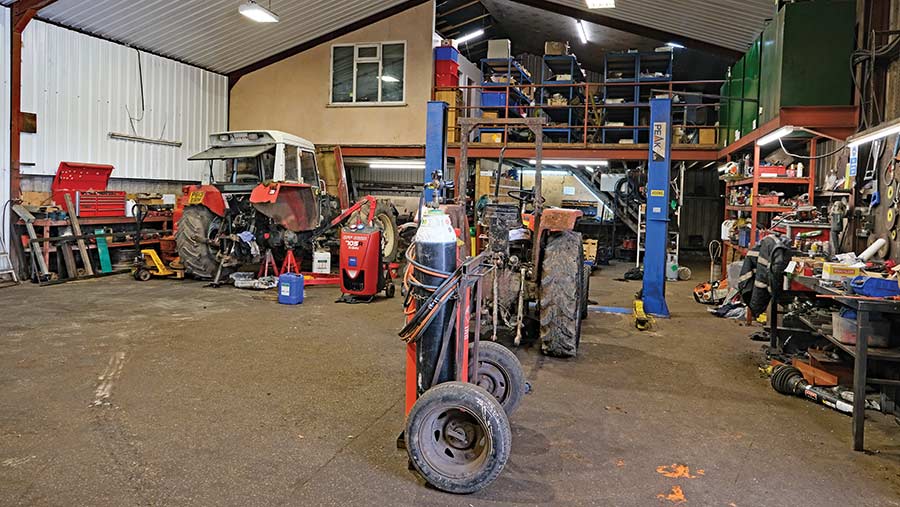
© James Andrews
Most agricultural contractors need a strategy for keeping the workforce busy and the bank account ticking over during the leaner winter months.
And for Graham Hayllar, this is involves running a workshop, a steel fabrication business specialising in portal-fame buildings, and a parts shop.
Current projects include a remote-controlled slurry pumping trailer for a local farm, a transmission rebuild on a JCB pivot-steer loader and a diesel engine transplant into a Standard Fordson N.
See also: Contractor’s expense of wholecrop header softened by buying ex-demo model
About the contractor

Graham Hayllar specialises in forage harvesting and slurry spreading in Cumbria’s undulating Eden Valley
But it’s not all about external work, with some time set aside for projects that will help the main contracting business.
Tanker top booms
The primary focus this year is on a pair of modified slurry tankers, which will be fitted with top booms for uploading into their 55cu m home-made nurse tank.
Currently, regular vacuum tankers are used for this, but with the nurse having just one filling connection at either end, it creates a bottleneck when several need to unload at the same time.
Having top booms gets around this as two or three can pour slurry over the top at the same time.
“Before we started the project, I went to the trouble of pricing up retrofit booms, but when I found out they were £6,500 each, I decided they were definitely a job for the workshop,” he says.
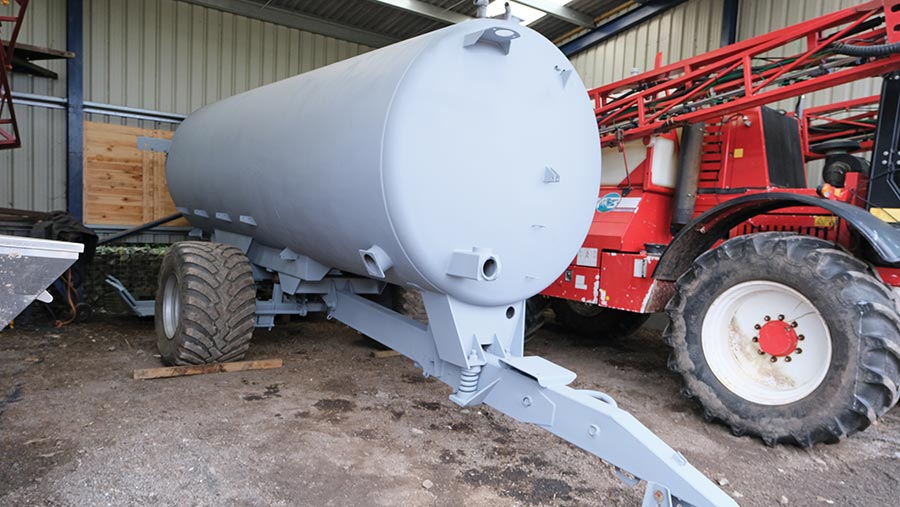
© James Andrews
One of the 3,000gal donor tankers, a Redrock, was already in the fleet and he purchased a rough-but-solid NC of the same size for £4,500.
Both are being stripped and fully sandblasted before the rotating turret and boom structure, which they will fabricate themselves, is grafted in place.
Graham has also earmarked the boom tankers for a system he’s considering using if he has to stop spreading with splash plates.
Currently, none of his tankers are fitted with dribble bars, so rather than shell out to upgrade them all, he’s considering investing in one dribble-bar equipped model with a top-fill port.
This can then stay in the field and the boom tankers can ferry slurry to it.
6195R back up and running
Another sizeable workshop endeavour completed since our last visit in September is a gearbox rebuild on their biggest tractor, a John Deere 6195R.
The damage occurred when a universal joint on the driveshaft between the engine and gearbox snapped, causing it to flail around and burr the end of the main shaft in the AutoPowr transmission.
At the time, mechanic Chris Hunter had got the box out of the tractor, stripped it down and was waiting for a £3,000 replacement shaft to arrive from Nick Young Tractor Parts.
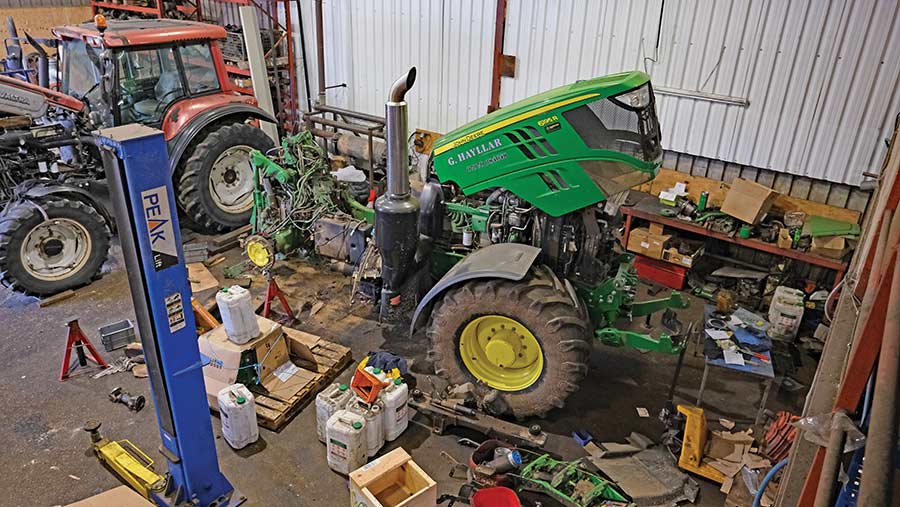
© James Andrews
Reassembly went according to plan, but the job ate up almost 70 hours’ worth of labour in total. The estimated cost is about £6,000 which, although painful, is a fraction of what it would have been at a main dealer.
Chris has also had to fit another reman turbo on the 6150R after the original replacement packed up after less than 100 hours.
“We started to hear it howling and when we looked inside, we could see that the veins were all chewed up, possibly because it was reassembled with the tolerances too tight,” says Chris.
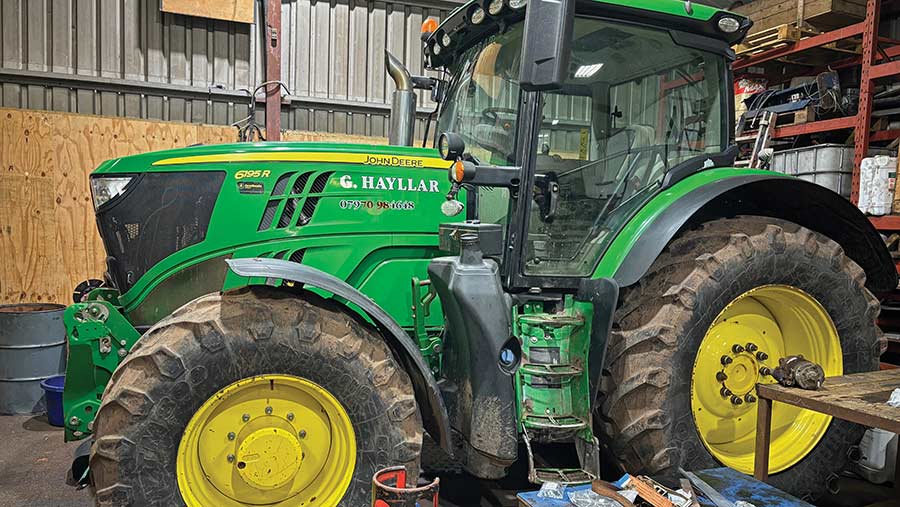
© James Andrews
“John Deere didn’t quibble about sending a replacement and we’ve never had a problem with reman turbos before, so hopefully it was a one-off.”
Searching for a strong front linkage
Front-mounted buck rakes are the clamp-building tool of choice for Graham and his team and these give front linkages a serious amount of stick.
Having tried most options, the 5t Zuidberg units sold by Lynx Engineering are the only ones that stand up to the abuse.
These were fitted on both of business’s 30-series tractors, but the Rs running front ptos have John Deere’s own version.
“They’re pathetic in comparison, with a lightweight construction and very little lift capacity,” says Graham.
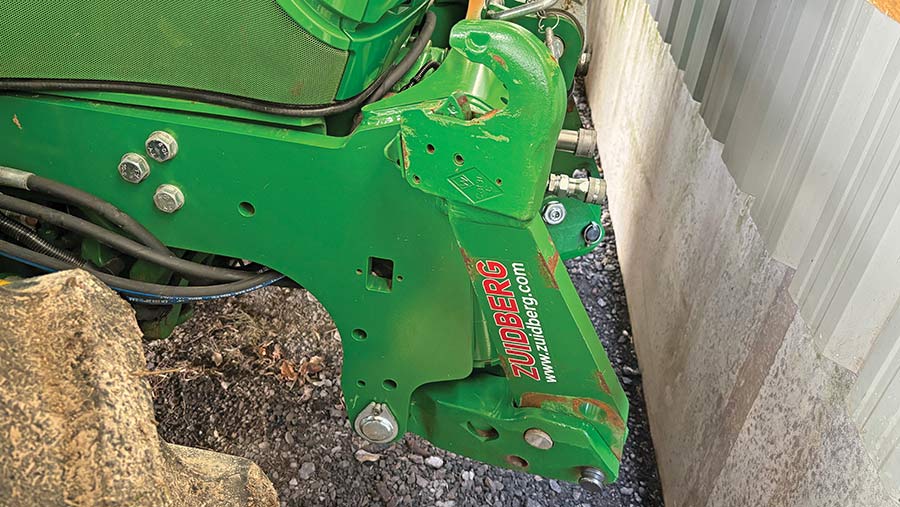
© James Andrews
He planned to upgrade them to the Lynx version, but when he was told they weren’t compatible with Deere’s pto pack, he decided to try Sauter.
These were able to lift more, but the curved side plates and narrow bottom pin meant they were too easy to bend.
“We’ve just swapped back to a Lynx on one of the 6155Rs and it actually fitted just fine, so this is the way we’ll go from now on.”
Machinery updates
The off-season has also given Graham time to invest in some new implements and weigh up options for updating some of the larger pieces of kit.
One of the new arrivals is a set of front-and-rear Claas Disco mowers to replace a set that were three years old.
The rear is the same FC3200 unit, but the front is a FC3200 Move, complete with a pull-type linkage.
“It’s much more sophisticated than the old push model, so it’ll be interesting to see how well it travels over the ground – hopefully it’ll be worth the extra £1,800.”
He also priced up some triples, but with the cost to change being more than £30,000, it didn’t make financial sense. “I think I’d rather have another set of front-and-rears.”
Fertiliser spreading has also been modernised with a KRM Bogballe M35W complete with section control.
Rather than shell out for John Deere unlock codes and limit its use to only the most recent tractors, Graham shunned isobus and opted for Bogballe’s tablet controller.
“I haven’t got on board with isobus yet and I like to have the option of using the spreader on the old 30-series tractors if I need to.”
A far bigger purchase yet to be decided is the prospect of upgrading one of his two Claas Jaguar 950 forage harvesters, which have worked 2,500 and 3,000 hours, respectively.
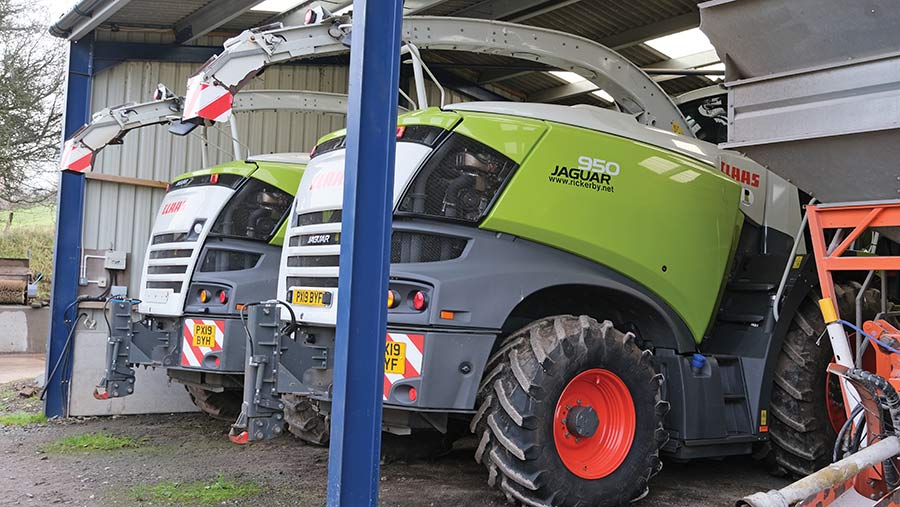
© James Andrews
Typically, he wouldn’t be looking to change just yet, but he’s got wind that the previous owner of his current models is upgrading, and his machines are always incredibly tidy.
It’s an opportunity to trade the 3,000-hour model for one that’s done just under half the workload, which he’ll take if the cost to change seems reasonable.
Less straightforward is what to do with the tractor fleet. One option is to upgrade the newest models – a pair of 6155Rs on about 4,500 hours apiece and the 12,000-hour 6195R.
Graham has approached Cornthwaites to put a deal together, but he’s also considering Claas Arions as an alternative.
They had one of these out on demo recently with a CVT transmission and they were impressed with its performance and how smooth it was to drive.
If changing the newest tractors proves too pricey, the lesser worked of the two 6830s, which has done 15,400 hours, could possibly be switched for something newer.
“Some of the lads have got their eye on a 7530, but I think I’d choose another R-series if we went down that route. The cab is nicer and they don’t have same cult following, so you tend to get a bit more for your money.
6830 tops 23,000 hours
The only tractor that’s definitely not going anywhere is the 58-plate 6830, which has just pushed past 23,000 hours.
“It’s not worth much to sell, but it’s worth a lot to us,” says Graham. “Plus, it still drives as well as the lower-hour 6830 and it can muck in on most of the jobs if we need it to.”
Mechanical condition is still good, with no significant work being carried out on the engine or transmission, despite it running at 200hp with a Derv Doctor remap.
Cosmetically, it’s starting to show its age though, with worn tyres, fading paint and frilly mudguards that have succumbed to the years of corrosive slurry.
“Hopefully, we’ll get chance to get in the workshop for a bit of a tidy up soon.”

